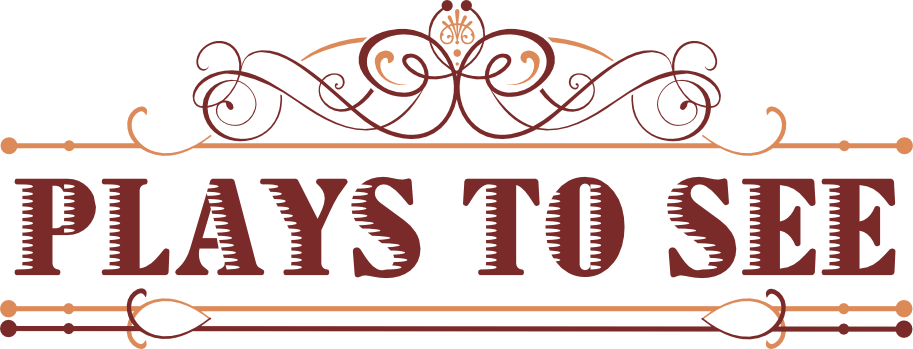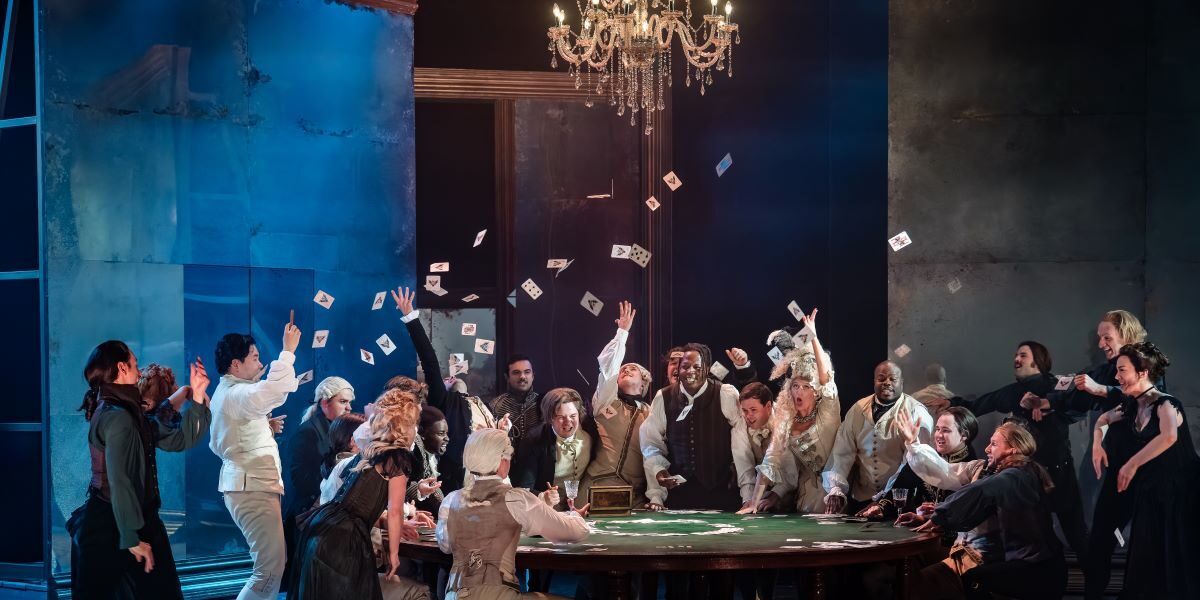The Queen of Spades/Pique Dame (1890) is a classic case of where literature and opera part company with independently successful results. Where the original Pushkin short story is spare, terse and ironic, Tchaikovsky and his brother Modeste turn the tale into a full-blown romantic melodrama of extraordinary propulsive intensity that never lets up from the anxious woodwind sequences of the opening to the hero’s final downfall. Moreover, the music is some of the composer’s very finest, ranging from delicate Mozartian pastiche through to grotesque and searing depictions of fateful passion that anticipate the sound world and emotional range of his final Pathétique Symphony.
The plot focuses on the fixating and addictive grip of gambling. So obsessive is Herman, an army officer, that he transfers his attentions from Lisa, an eligible aristocratic bride, to her grandmother, the Countess, a mysterious old lady with a rackety past in the French court of Versailles. She is rumoured to have lost and then won back a fortune, partly through her skills as a courtesan and partly through her knowledge of a secret 3-card combination which Herman is determined to wrestle from her. His ruthless determination has disastrous consequences for all concerned.. What we encounter alongside a compelling central plotline are memorable crowd scenes – on the streets of St Petersburg, in aristocratic reception rooms, and low dives – together with sharply etched supporting characters who all get their showboat moments. It is an opera with something for everyone, whether as performer, director, musician or set, costume and lighting designer.
Director Jack Furness and designer Tom Piper decide to set the story in the reign of Catherine II, in line with the original. The sets and costumes embrace full eighteenth-century opulence as a result, with the dominant feature a segmented mirrored wall, rearranged to frame private and public spaces, together with a small-scale thrust-stage to showcase certain key scenes such as the Mozartian pastorale (all the stronger in this production for having some of the leads perform as characters in the entertainment) The overall result offers great flexibility and suppleness for transitions between scenes, essential in such a fast-moving and action packed drama – though on the night I was there the very end of the ballroom scene failed to score because Herman got enravelled in the crucial curtains. Lizzie Powell’s lighting design was continuously on point, whether in the delicate moonlight effects in the Countess’s bedroom or the lurid expressionist greens within which Lisa meets her watery end.
Douglas Boyd and the Philharmonia in the pit had a fine evening. Given the highly contrasted musical palate – from Gretry to Grand Guignol – variable dynamics are essential, and it is much to the credit of all involved that we were drawn with equal power into the whispered pianissimos of the Countess’s aria as much as we taken on the full relentless march of destiny along the banks of the Neva.
This last scene brought out the very best in two leads, Aaron Cawley and Laura Wilde. Both have very powerful instruments, more than capable of riding an orchestra at full tilt; but they did not always find the moments of quieter repose and introspection in the score to the same extent. Cawley in particular started off too loudly and intensely as the full brooding Byronic hero, which left him with fewer high gears for the final scenes. Though this may as much be due to the influence of the director, who clearly wanted us to see events right from the beginning through Herman’s warped and solipsistic perspective alone.
As I said, one of the joys of this score is the strength and individuality of the supporting roles, all well taken here. Diana Montague was indisposed, but Harriet Williams was an accomplished understudy, with her characterisation of the Countess both before and beyond the grave, both spiky and wistful, as required. Roderick Williams was much lighter-voiced Prince Yeletsky than usual, but his vocal refinement and regretful pointings of the text contrasted notably with the splashier colours elsewhere. Robert Hayward and Stephanie Wake-Edwards likewise made the most of the roles of Tomsky and Polina.
No review of this production could conclude without praise for the Garsington Chorus, these days quite the equal of their famous opposite numbers at Glyndebourne. Not only was the singing top-notch, but the acting consistently detailed and credible, so much so that I often found my eye wandering from the principals to the delightful pieces of stage business going on around them – a particular shout-out goes to the boy soldiers on disarrayed parade in the opening tableau.
All involved in at Garsington’s new production seize their chances with bravado; and while not everything comes off, the evening as a whole is completely absorbing, giving a compelling account of the drama and a memorable performance of its many vocal and orchestral splendours.
Composer: Pyotr Ilyich Tchaikovsky
Libretto: Modeste Tchaikovsky
Conductor: Douglas Boyd
Director: Jack Furness
Cast includes: Aaron Cawley, Robert Hayward, Laura Wilde, Stephanie Wake-Edwards, Harriet Williams, Roderick Williams
Photo Credit: Julian Guidera
Until 4 July 2025
4 hrs 30 mins with dining interval

